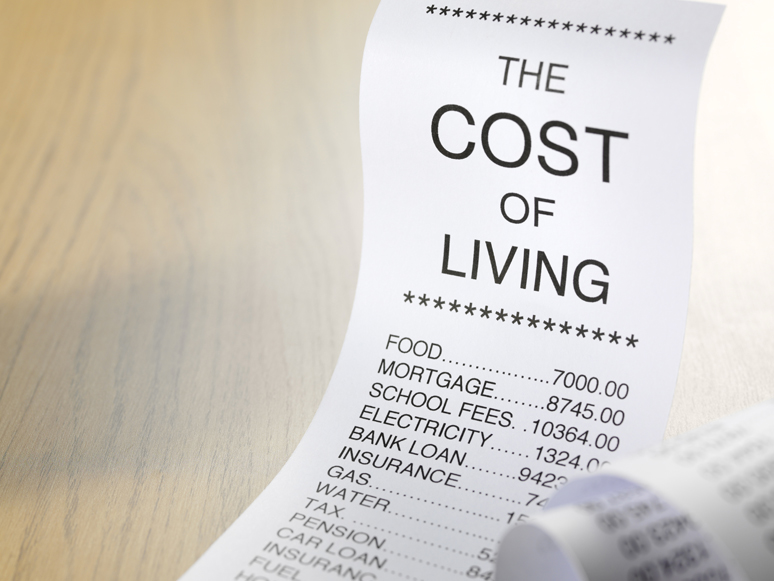logo


23rd Jul, 2023

Retirees who draw an account-based pension from their super need to be aware that the 50% reduction in
the minimum pension drawdown rate for superannuation and annuities which applied for previous years will no longer apply from 1 July 2023.
This temporary measure was introduced by the previous Federal Government as part of its response to the COVID-19 pandemic, which was negatively impacting super and pension/annuity balances.
Most income streams paid from a super account held in an individual member’s name are account-based pensions. These pensions are required to meet minimum standards, including not being able to increase the capital supporting the pension using contributions or rollover amounts once the pension has commenced, and paying a minimum amount at least once a year.
In general, minimum payments need to be made at least once a year and are determined by the age of the beneficiary and the value of the account balance as at 1 July each year. For example, people aged between 65 and 74 will need to apply a 5% standard percentage factor to work out the minimum pension amount for 2023–2024.
While the minimum annual payments are mandated, there are no maximum annual payments, except for transition to retirement pensions which have a maximum annual payment limit of 10% of the account balance at the start of each financial year. This means that retirees can draw a pension above the minimum pension payment amount, which may be especially welcome given the current cost of living pressures.
31st Mar, 2022

The Government will make a $250 one-off cost of living payment in April 2022 to six million eligible pensioners, welfare recipients, veterans and eligible concession card holders.
The $250 payment will be tax-exempt and not count as income support for the purposes of any Government income support. A person can only receive one economic support payment, even if they are eligible under two or more of the eligible categories.
The payment will only be available to Australian residents who are eligible recipients of the following payments, and to concession card holders:
The Government will reduce the excise and excise- equivalent customs duty rate that applies to petrol and diesel by 50% for six months. The excise and excise- equivalent customs duty rates for all other fuel and petroleum-based products, except aviation fuels, will also be reduced by 50% for six months.
The Treasurer said this measure will see excise on petrol and diesel cut from 44.2 cents per litre to 22.1 cents. Mr Frydenberg said a family with two cars who fill up once a week could save around $30 a week, or around $700 over the next six months. The Treasurer made a point of emphasising that the Australian Competition and Consumer Commission (ACCC) will monitor the price behaviour of retailers to ensure that the lower excise rate is fully passed on.
The measure will commence from 12.01 am on 30 March 2022 and will remain in place for six months, ending at 11.59 pm on 28 September 2022.
31st Mar, 2022

The Budget did not announce any change to the timing of the next super guarantee (SG) rate increase. The SG rate is currently legislated to increase from 10% to 10.5% from 1 July 2022, and by 0.5% per year from 1 July 2023 until it reaches 12% from 1 July 2025.
With the SG rate set to increase to 10.5% for 2022– 2023 (up from 10%), employers need to be mindful that they cannot use an employee’s salary-sacrificed contributions to reduce the employer’s extra 0.5% of super guarantee. The ordinary time earnings (OTE) base for super guarantee purposes now specifically includes any sacrificed OTE amounts. This means that contributions made on behalf of an employee under a salary sacrifice arrangement (defined in s 15A of the Superannuation Guarantee (Administration) Act 1992) are not treated as employer contributions which reduce an employer’s charge percentage.
Super Guarantee opt-out for high-income earners
The increase in the SG rate to 10.5% from 1 July 2022 also means that the SG opt-out income threshold will decrease to $261,904 from 1 July 2022 (down from $275,000). High-income earners with multiple employers can opt-out of the SG regime in respect of an employer to avoid unintentionally breaching the concessional contributions cap ($27,500 for 2021– 2022 and 2022–2023). Therefore, the SG opt-out threshold from 1 July 2022 will be $261,904 ($27,500 divided by 0.105).
The temporary 50% reduction in minimum annual payment amounts for superannuation pensions and annuities will be extended by a further year to 30 June 2023.
The 50% reduction in the minimum pension drawdowns, which has applied for the 2019–2020, 2020–2021 and 2021–2022 income years, was due to end on 30 June 2022. However, the Government announced that the Superannuation Industry (Supervision) Regulations 1994 (SIS Regulations) will be amended to extend this temporary 50% reduction for minimum annual pension payments to the 2022– 2023 income year. Given ongoing volatility, the Government said the extension of this measure to 2022–2023 will allow retirees to avoid selling assets in order to satisfy the minimum drawdown requirements.
Minimum drawdowns reduced 50% for 2022–2023
The reduction in the minimum payment amounts for 2022–2023 is expected to apply to account-based, allocated and market linked pensions. Minimum payments are determined by age of the beneficiary and the value of the account balance as at 1 July each year under Sch 7 of the SIS Regulations.
No maximum annual payments apply, except for transition to retirement pensions which have a maximum annual payment limit of 10% of the account balance at the start of each financial year.
For the purposes of determining the minimum payment amount for an account-based pension or annuity for the financial years commencing 1 July 2019, 1 July 2020, 1 July 2021 (and 1 July 2022 proposed), the minimum payment amount is half the amount worked under the formula in clause 1 of Sch 7 of the SIS Regs. The relevant percentage factor is based on the age of the beneficiary on 1 July in the financial year in which the payment is made (or on the commencement day if the pension commenced in that year).
For market linked income streams (MLIS), the minimum payment amount for the financial years commencing 1 July 2019, 1 July 2020, 1 July 2021 (and 1 July 2022 proposed) must be not less than 45% (and not greater than 110%) of the amount determined under the standard formula in clause 1 of Sch 6 of the SIS Regs.
Note that the 50% reduction in the minimum annual pension payments are not compulsory. That is, a pensioner can continue to draw a pension at the full minimum drawdown rate or above for 2019–2020, 2020–2021, 2021–2022 (and 2022–2023 proposed), subject to the 10% limit for transition to retirement pensions. However, it will generally be inappropriate to take more than the minimum annual drawdowns in the form of a pension payment given the pension transfer balance cap. Rather, it generally makes more sense to access any additional pension amount above the minimum drawdown in the form of a partial commutation of the pension instead of taking more than the minimum annual drawdowns. This is because a commutation will generate a debit for their pension transfer balance account, while an additional pension payment above the minimum will not result in a debit.
07th Sep, 2021

The government is seeking to legislate compulsory reporting of information for sharing economy platforms in order to more easily monitor the compliance of participants, while at the same time reducing the need for ATO resources.
As the sharing economy becomes more prevalent and fundamentally reshapes many sectors of the economy, the government is scrambling to contain the fall-out. While there no standard definition of the term “sharing economy”, it’s usually taken to involve two parties entering into an agreement for one to provide services, or to loan personal assets, to the other in exchange for payment. Examples of platforms include Uber, Airbnb, Car Next Door, Menulog, Airtasker and Freelancer, to name a few.
With the rapid expansion of various sharing economy platforms, the government’s Black Economy Taskforce has noted that without compulsory reporting, it is difficult for the ATO to gain information on compliance without undertaking targeted audits. Putting formal reporting requirements in place will align Australia with international best practice.
The government has now released draft legislation for consultation to define the scope of compulsory reporting requirements in order to ensure integrity of the tax system and reduce the compliance burden on the ATO.
This new compulsory reporting regime would apply to all operators of an electronic service, including websites, internet portals, apps, gateways, stores and marketplaces. Any platforms that allow sellers and buyers to transact will be required to report information on certain transactions. However, the reporting requirement will generally not apply if the transaction only relates to supply of goods where ownership of the goods is permanently changed, where title of real property is transferred, or the supply is a financial supply.
Based on the draft legislation, platform operators will be required to report transactions that occur on or after 1 July 2022 if they relate to a ride-sourcing or a short-term accommodation service, unless an exemption applies. From 1 July 2023 all other categories of sharing economy platforms will be required to report, unless an exemption applies.
The initial reporting is expected to be biannual (1 July to 31 December, and 1 January to 30 June) with electronic service operators required to report the relevant information by 31 January and 31 July respectively.
Reminder: super changes for the 2021 financial year
The government’s long-slated “flexibility in superannuation” legislation is finally law. This means from 1 July 2021, individuals aged 65 and 66 can now access the bring-forward arrangement in relation to non-concessional super contributions. The excess contributions charge will be removed for anyone who exceeds their concessional contributions cap, and individuals who received a COVID-19 super early release amount can now recontribute it without hitting their non-concessional cap.
Previously, if you made super contributions above the annual non-concessional contributions cap, you could automatically access future year caps if you were under 65 at any time in the financial year.
The bring-forward arrangement allows you to make non-concessional contributions of up to three times the annual non-concessional contributions cap in that financial year.
Previously, individuals who exceeded their concessional contributions cap would have to pay the excess contributions charge (around 3%) as well as the additional tax due when excess contributions were re-included in their assessable income. However, people who exceed their cap on or after 1 July 2021 will no longer pay the charge, but will still receive a determination and be taxed at their marginal tax rate on any excess concessional contributions amount, less a 15% tax offset to account for the contributions tax already paid by their super fund.
Under the COVID-19 early release measures, individuals could apply to have up to $10,000 of their super released during the 2019–2020 financial year and another $10,000 released between 1 July and 31 December 2020. Between 20 April 2020 and 31 December 2020, the ATO received 4.78 million applications for early release, totalling $39.2 billion worth of super.
Not everyone who applied to have super released ended up needing to use it once the government ramped up its financial support programs. From 1 July 2021, people who received a COVID-19 super early release amount can recontribute to their super up to the amount they released, and those recontributions will not count towards their non-concessional contributions cap. The recontribution amounts must be made between 1 July 2021 and 30 June 2030 and super funds must be notified about the recontribution either before or at the time of making the recontribution.
24th Aug, 2021

From 1 July 2021, the rate of super guarantee increased from 9.5% to 10%. Businesses using manual payroll processes should be careful that this change doesn’t lead to unintended underpayment of super, which may attract penalties.
The new rate of 10% is the minimum percentage now required by law, but employers may pay super at a higher rate under an award or agreement.
Most payroll and accounting systems will have incorporated the increase in their super rate, but it’s always good to check. If your business is still using a manual process to pay your employees, you’ll need to work out how much super to pay under the new rate.
This latest increase to 10% is by no means the last time the super guarantee rate will change over the next few years. From 1 July 2022 to 30 June 2023 (ie next financial year) the rate will increase to 10.5%, followed by another 0.5% point increase to 11% in the 2023–2024 financial year. So, employers will need to be on their toes to make sure the right amount of super guarantee is paid for the next few years.
01st Jul, 2021

The Federal Government has announced a temporary COVID Disaster Payment to assist workers who live or work in a Commonwealth declared hotspot, who are unable to attend work and earn an income as a result of state-imposed health restrictions that last for longer than one week.
The payment, available for Australian citizens, permanent residents and eligible working visa holders, is up to $500 per week for recipients who lose 20 hours or more of work, and $325 per week those who lose under 20 hours of work.
Access to the payment is available through Services Australia from 8 June 2021.